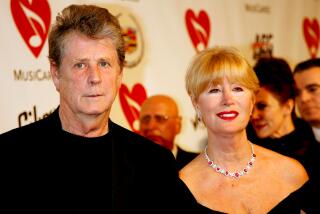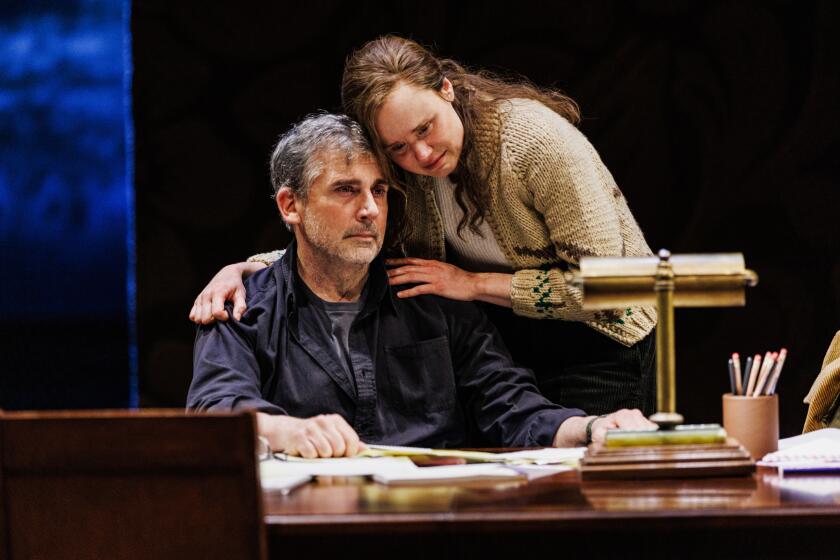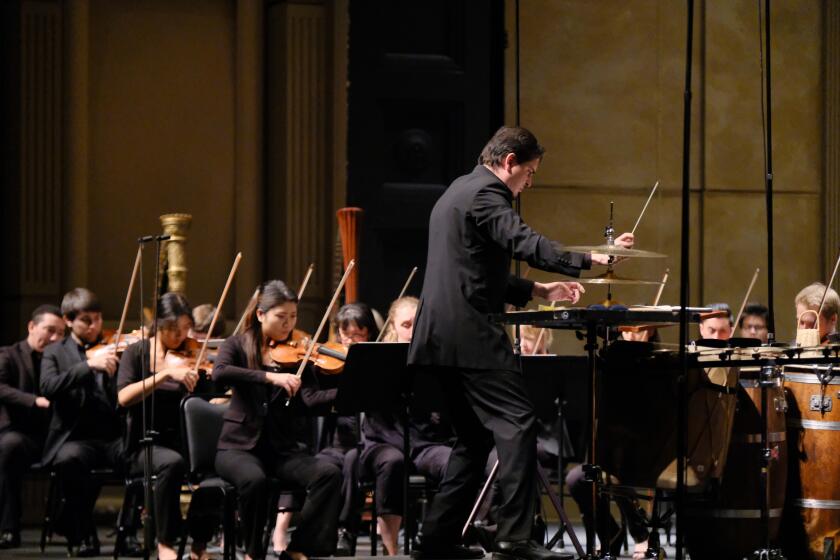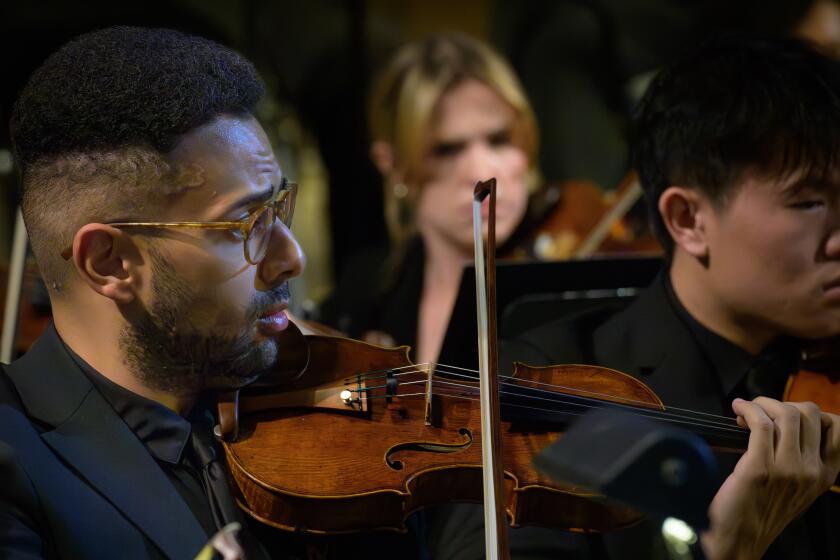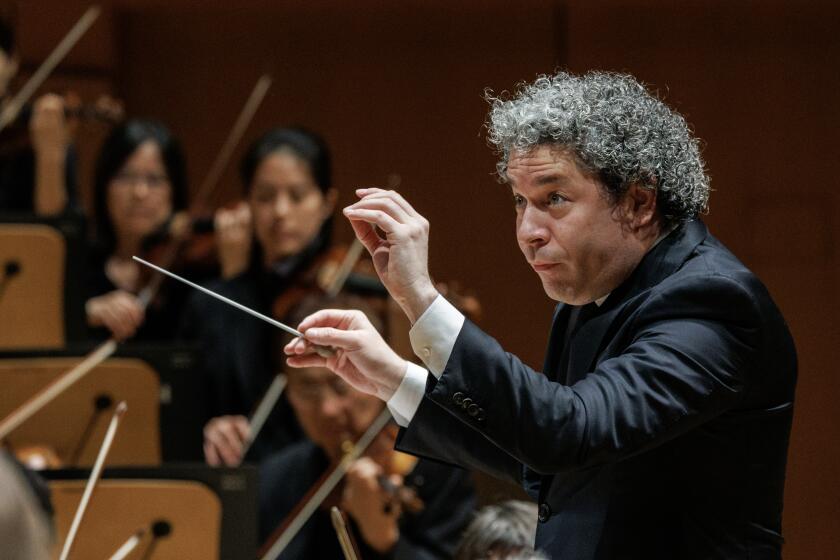Opera Cupboard Isn’t Bare Anymore
Five years ago, Southern California opera lovers looked at a bare landscape--occasionally dotted with a production here or there. But now from Los Angeles to San Diego there is a choice of fare--be it the big-budget, high-profile, internationally cast attractions of Music Center Opera or the various other offerings from enterprises south of Grand Avenue.
No one argues that opera hereabouts, or the population, is proliferating. In 10 years, another 24 million licensed drivers will be further clogging the freeways, and local impresarios such as Opera Pacific’s David DiChiera sees “traffic density as the key to separate urban arts centers.”
He said that audiences will probably not avail themselves of choices inasmuch as people prefer to avoid an hour’s drive (or more) when they have alternatives.
“My whole repertory approach takes this into account,” DiChiera, general director of the Costa Mesa-based company, explained. “Since I’m in the business of building an audience, it’s important to note my constituency and get into the mainstream.
“People here (in Orange County) have had limited exposure to opera, so it behooves me to offer bread-and-butter Puccini, for instance, and stay away from difficult pieces--at least for now.”
His company, a resident of the Orange County Performing Arts Center, began building its subscription list in 1987, a year after Los Angeles Music Center Opera (LAMCO) was inaugurated.
“We started from scratch,” DiChiera said, “and now count 10,000 names.” And a budget of $5 million.
Peter Hemmings, director of the $12-million Music Center Opera, confirms DiChiera’s notion that audiences like to stay put in their respective communities.
“And that makes the proliferation even more impressive,” he says, “because there’s very little crossover, the houses are full and the demand is considerable.”
But all is not as glorious as it seems, warned Hemmings: “At the moment one would think we have an abundance of opera. But the picture is deceptive. What we have is a cluster of activity in these particular months.”
He points out that the 25-year-old San Diego Opera, for instance, now schedules everything in the spring and that, for a more accurate impression, one must look at what the fall season turns up.
Meanwhile, opera buffs need not hazard gridlock. With performances of “Falstaff” at the Music Center, “Turandot” at the Orange County Performing Arts Center, “Dialogues des Carmelites” in San Diego continuing and “Don Giovanni” and “Don Carlo” just ahead, opera-goers have quite a selection--compared to no selection five years ago.
Also, other activity on the opera scene: Upcoming is the L.A. premiere of “Power Failure” by the Paul Dresher Ensemble at UCLA Feb. 23 and 24. An opera-theater collaboration by composer Dresher, Rinde Eckert and director Richard E.T. White, the work shows the characters competing for power in a pharmaceutical research company and the abuse and greed that drives its top management.
Then there’s the two one-act operas, Puccini’s “Gianni Schicchi” and Gian Carlo Menotti’s “The Medium,” also at UCLA the next two Fridays and Saturdays at 8 p.m. The fully staged work is presented by UCLA Opera Workshop and the UCLA Symphony.
A gala concert by the Opera Buffs, a support group that provides scholarship to budding opera singers, will take place at 2 p.m. today at Mount St. Mary’s College. Soprano Ealynn Voss and tenor Jorge Lopez-Yanez will be featured in concert. Voss, incidentally, alternately sings the title role in Opera Pacific’s “Turandot,” which opened Friday, and closes March 4.
JEWISH MUSIC--Ethnic music, especially ethnic art music, says Neal Brostoff, founder of the Jewish Music Foundation, is “only now being tapped.” Ten years ago, Brostoff observes, “There were no Jewish music organizations in this area. Now there are three and we are the new kid on the block.” He says each of these groups--the others are the Friends of Jewish Music in Orange County and the San Fernando Valley-based Jewish Music Commission--concentrate on a different area of music.
Brostoff’s foundation leans toward “the more contemporary and avant-garde,” and, in the four years of its existence, the foundation, said Brostoff, has been successful in attracting audiences and institutional and grant support for its nonprofit programs (a budget of about $22,000 annually--with no paid staff).
The foundation presents its third season beginning Tuesday and Wednesday with twin performances by the touring Boston Camerata, led by Joel Cohen. The six-member ensemble from Massachusetts will present Jewish music of the 13th to 18th Centuries at Sephardic Temple Tifereth Israel in Westwood on Tuesday and Temple Bat Yahm in Newsport Beach on Wednesday, both at 8 p.m.
“Kol Eesha--Music by Women Composers” is the name of the second program of this 1990 season to be given in Schoenberg Hall at UCLA on April 1.
Writers to be represented are Smadar Handelsman, Miriam Gideon, Diane Thome, Verdina Shlonsky and Tsippi Fleisher.
“Nine from L.A.,” the June 10 program to be performed at Leo Baeck Temple in Bel-Air, is a retrospective of California composers transplanted here for work in films and other local industries, 1940-81. Mario Castelnuovo-Tedesco, Max Helfman, Eric Zeisl, Maurice Goldman, Robert Strassburg, William Sharlin, Aminadav Alani, Joseph Kantor and Michael Isaacson are the featured composers.
NOW HEAR THIS: Choreographers, dance teachers, musicians and other performers who use music could be liable for huge fines if they violate a tough new Environmental Protection Agency anti-noise pollution law. The Local Law 92 (“Disco Bill”) calls for violators to pay fines of $1,000 a day, with second offenses costing $4,000. The EPA statute also defines the allowable level for music to be 45 decibels, while jackhammers and other construction equipment are allowed to operate at 90 db (permanent hearing damage is 85 db, normal conversation is 60 db).
Daniel Cariaga contributed to this column.
More to Read
The biggest entertainment stories
Get our big stories about Hollywood, film, television, music, arts, culture and more right in your inbox as soon as they publish.
You may occasionally receive promotional content from the Los Angeles Times.

